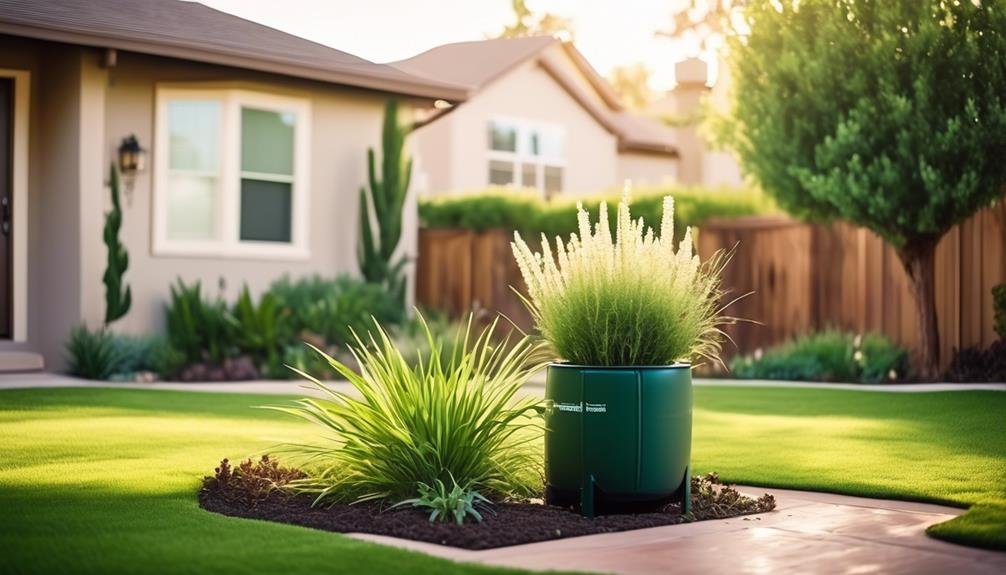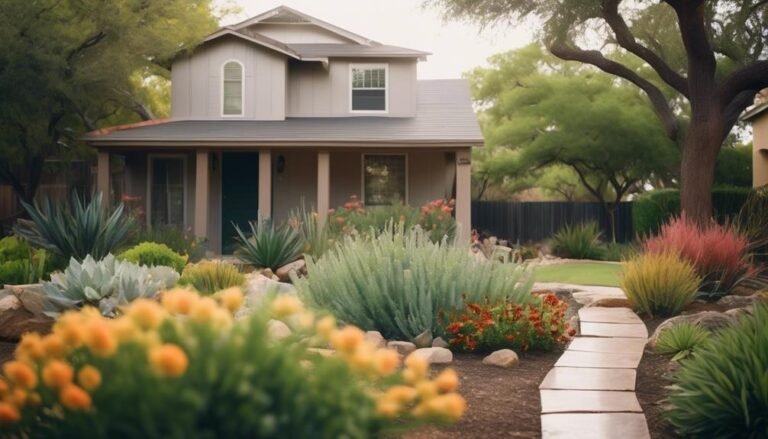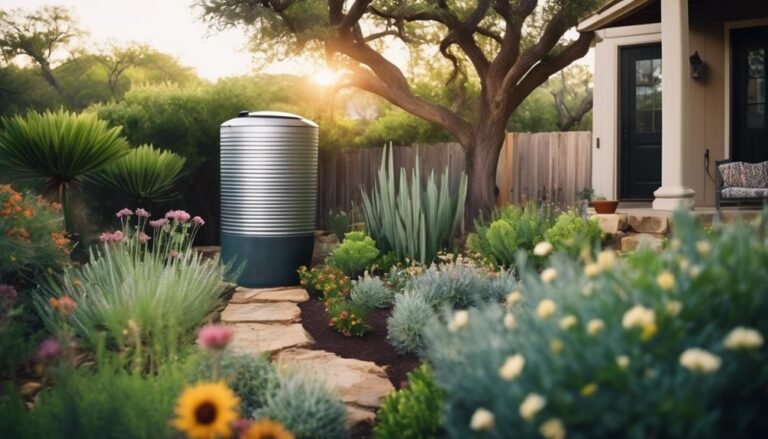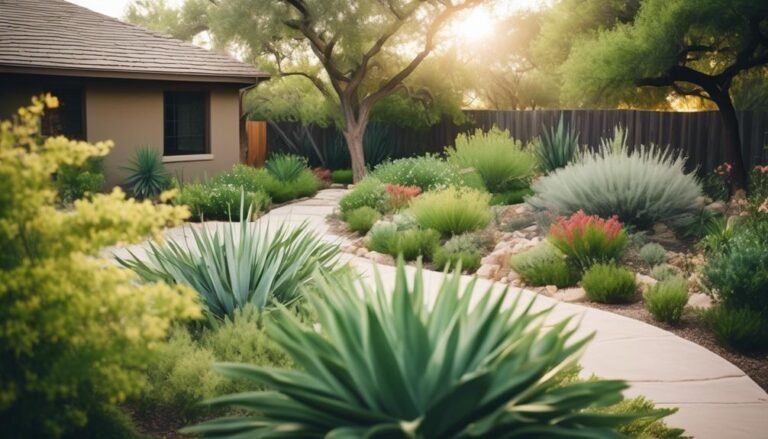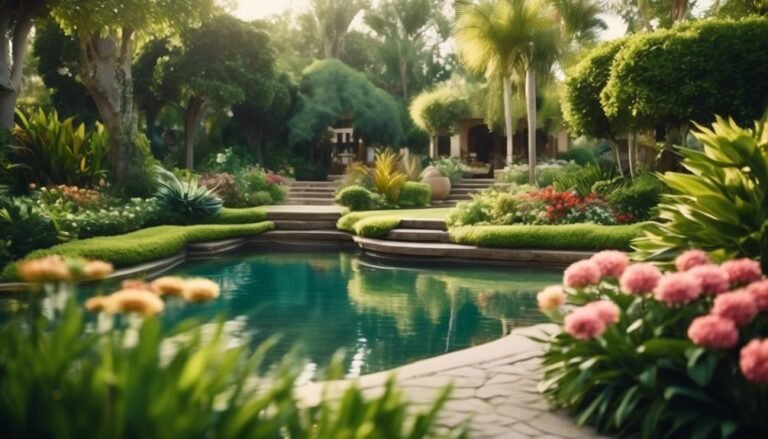Drought-Resilient Lawn Care Options for Antonio Homes
Are you tired of struggling to maintain a lush, green lawn in Antonio's dry climate? It's time to consider drought-resilient lawn care options.
With water conservation becoming increasingly important, we need to find sustainable and environmentally friendly alternatives. From innovative irrigation systems to low-maintenance landscaping techniques, there are many strategies to transform your outdoor space into a thriving oasis.
Let's explore some practical and cost-effective solutions that can help you achieve a vibrant and resilient lawn without using up all your water or breaking the bank.
Key Takeaways
Struggling to keep your lawn green in Antonio's dry climate? It's time to consider drought-resilient lawn care options.
Water conservation is vital, and we need sustainable, eco-friendly alternatives. From smart irrigation systems to low-maintenance landscaping techniques, there are many strategies to turn your outdoor space into a thriving oasis.
Let's look at practical and cost-effective solutions that can help you achieve a vibrant and resilient lawn without using up all your water or breaking the bank.
Choosing Drought-Resistant Grass Varieties
When picking drought-resistant grass types for your lawn, it's important to consider the unique benefits and maintenance needs of each one to ensure a healthy and sustainable landscape.
If you want a low-maintenance option that doesn't need constant watering, Buffalo grass is a great choice. It can thrive in dry conditions, making it perfect for both homes and businesses in San Antonio.
On the other hand, St. Augustine grass is lush and beautiful but needs watering every three weeks to survive, so it may not be the best choice for areas prone to drought.
If you prefer grass that can bounce back and turn green again after a drought, Bermuda and zoysia grass are good options to consider.
It's crucial to note that during San Antonio's Stage 2 drought restrictions, irrigation is only allowed once a week during limited hours, so choosing the right grass variety is essential for maintaining a vibrant lawn. Thankfully, hand-watering is allowed at any time, giving you flexibility for your specific lawn care needs.
Implementing Efficient Irrigation Systems
Hey there, homeowners! Have you ever thought about using a drip irrigation system for your lawn and plants? This system delivers water straight to the roots, making sure your plants get the water they need without any waste. It's a great way to save water and keep your plants healthy.
By using efficient irrigation systems like this, you can cut down on the time and effort needed for manual watering. Plus, you can customize the watering to fit the specific needs of your plants, which can save you money on maintenance in the long run.
These systems are also a sustainable way to keep your lawn green while using less water, especially during dry spells or after extreme weather events like the Texas deep freeze. Keep in mind that the cost of these systems can vary based on the size of your lawn and how complex you want the system to be. If you're not sure which system is right for you, talking to a lawn care professional can help you figure it out.
Here's a quick summary of some other efficient irrigation systems to consider:
- Sprinkler Systems: These cover large areas and can be adjusted for different plant needs.
- Soaker Hoses: They provide slow, steady watering, which is perfect for certain types of plants.
- Smart Irrigation Controllers: These customize watering schedules based on the weather and your plant's needs.
- Rainwater Harvesting Systems: These use collected rainwater for watering, helping you save water.
These systems offer practical and sustainable solutions for taking care of your lawn while also looking out for the environment.
Adopting Xeriscaping Techniques
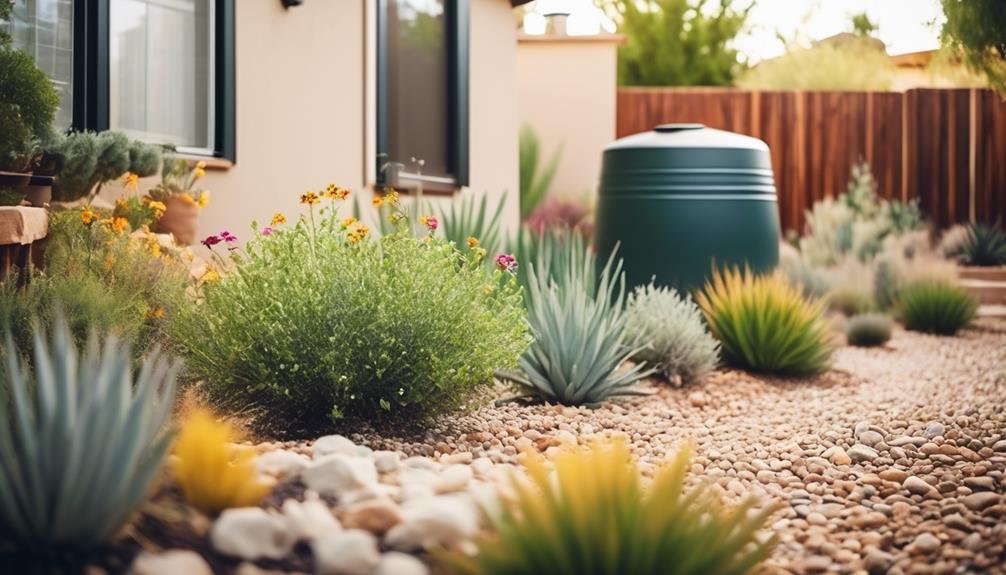
Transforming your lawn into a drought-resistant oasis is a smart move, especially in San Antonio's dry climate. Xeriscaping techniques offer a practical and creative solution that can make a big difference. By using drought-tolerant plants like cacti and succulents, you can create a beautiful and low-maintenance landscape. Adding pea gravel and mulch not only looks great but also helps save water and reduce the need for constant upkeep.
Xeriscaping can save you time, effort, and money that you'd normally spend on lawn maintenance, making it an environmentally friendly choice. While hiring a landscape designer for xeriscaping may cost around $3,298, the long-term savings and environmental benefits make it a worthwhile investment.
In addition to being cost-effective, xeriscaping aligns with sustainable landscaping practices, which are important for conserving water during droughts and lowering water bills. It can also help combat issues like chinch bugs, which are common in sunny areas. By adopting xeriscaping, you're not just creating a beautiful and practical lawn; you're also helping to preserve San Antonio's water resources.
Utilizing Drought-Tolerant Ground Covers
When it comes to creating a lawn that can withstand drought conditions, xeriscaping techniques offer a sustainable and cost-effective solution. An alternative worth considering is the use of drought-tolerant ground covers for your San Antonio home. These ground covers are easy to maintain and versatile, providing a great option for your landscaping needs.
Some ground covers can be mowed and thrive in shaded areas, offering flexibility in your lawn design. They also help prevent erosion and protect trees from mower damage, which adds both aesthetic and practical value to your lawn.
For homeowners in San Antonio, native ground covers like horseherb, heartleaf skullcap, and wood fern are excellent choices. These native ground covers are well-suited to the local climate and can usually be found at nearby nurseries, making them easily accessible for those looking to make their lawn more drought-resistant.
Maintaining Drought-Resilient Landscaping Practices
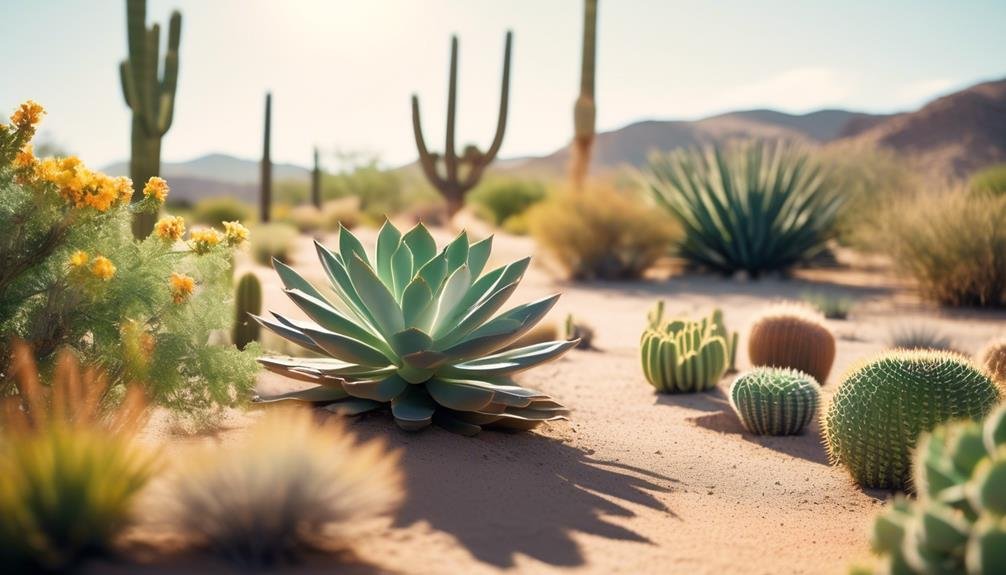
Maintaining a drought-resilient landscape in San Antonio is important for homeowners. Choosing grass varieties like Buffalo grass and Bermuda grass that need minimal watering and can handle dry conditions can help save time, money, and water. Installing a drip irrigation system to water the grass directly at the roots is also a good idea. This helps in efficient watering and reduces water wastage.
Considering low-maintenance options like xeriscaping, native plants, and ground cover can further reduce the need for seasonal watering and minimize yard work during drought periods. Evaluating the maintenance needs and soil adaptability of different grass types like St. Augustine grass and Centipedegrass can help homeowners choose the best option for drought-resilient landscaping in San Antonio.
These practices can help homeowners maintain a healthy and vibrant lawn that requires little yard work and remains resilient during drought conditions.
Frequently Asked Questions
What Is the Easiest Grass to Grow in San Antonio?
If you're a homeowner in San Antonio, you'll be happy to know that Bermudagrass is the easiest type of grass to grow in our area. It can handle tough conditions and doesn't need a lot of attention, making it perfect for areas with lots of foot traffic and plenty of sunshine. This type of grass is a great choice for those looking for a low-maintenance and drought-tolerant lawn solution.
What Is the Most Durable Drought Resistant Grass?
Looking for tough, drought-resistant grass for your lawn? You might want to consider buffalograss, Bermuda, or zoysia. These types of grass are native to the area and do really well in dry conditions. They can bounce back even with just a little bit of water. Plus, they're perfect for homeowners who want a low-maintenance, resilient lawn.
What Is the Best Grass for South Texas?
If you're a homeowner in South Texas, Bermuda grass is the way to go. It can handle the scorching heat and doesn't need a lot of water, which is great for saving on your water bill. Plus, it's tough enough to handle all the running and playing in your yard.
What Is the Best St Augustine Grass for Shade in San Antonio?
Looking for the best St. Augustine grass for shade in San Antonio? Well, the palmetto variety is just what you need. It's perfect for areas with moderate shade and needs less upkeep compared to other types. So if you want a lush and resilient lawn, consider giving palmetto St. Augustine grass a try.

